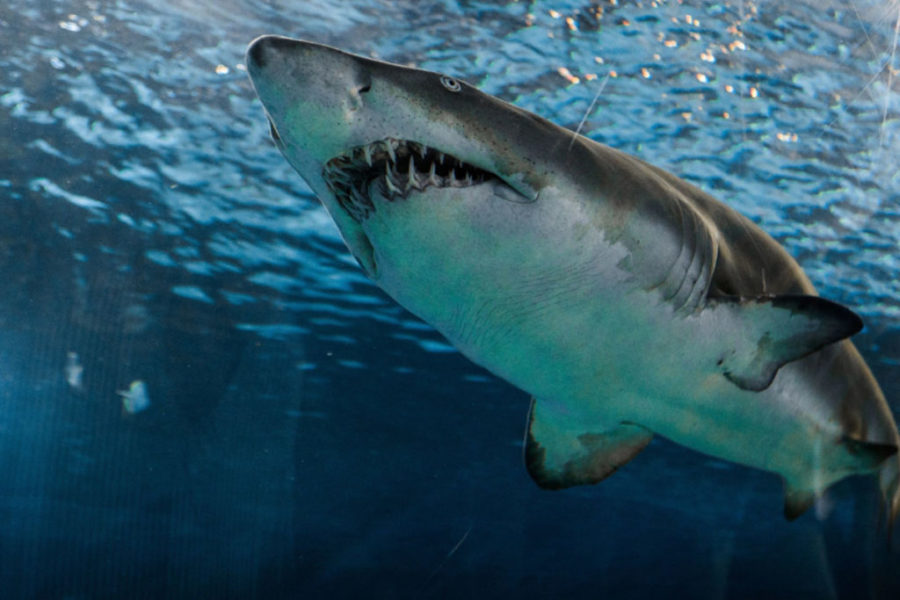Solomon Islands-
“Yes, you read that right. It’s a submerged arc volcano, full of sharks. The volcano’s name is Kavachi, and it lives in the southwest Pacific Ocean, about 24 km (15 mi) south of Vangunu Island.“
The following written content via Extremetech
File this one under “I didn’t believe it until I checked the source.” There’s a submerged ‘sharkcano’ in the Solomon Islands, and NASA scientists have warned that it may be about to erupt.

Yes, you read that right. It’s a submerged arc volcano, full of sharks. The volcano’s name is Kavachi, and it lives in the southwest Pacific Ocean, about 24 km (15 mi) south of Vangunu Island. Geologically, it’s just northeast of an active subduction zone. Kavachi is also flanked by the Bougainville trench to the southwest. Challenger Deep, in the Marianas trench, lies to the northwest.
Western cartographers identified the volcano after a major eruption in 1939. Kavachi is part of the Pacific Ocean’s Ring of Fire. True to form, it’s been erupting more or less continuously since we discovered it. The volcano’s island is named for a sea god of the Gatokae and Vangunu peoples. Locals sometimes call it Rejo te Kvachi, or “Kavachi’s Oven.”
In October of 2021, Kavachi entered an “eruptive phase,” according to the Smithsonian’s Global Volcanism Program. Now, in images from NASA’s Landsat 9, there’s an expanding plume of discolored water coming from the submarine volcano. As Karachi erupts, it releases a plume of noxious sulfur compounds and caustic acid into the water.
Since we discovered it, Kavachi has created several ephemeral islands, up to a kilometer long. However, the relentless wave action has eroded and washed them away. Consequently, the plume is coming from one of Kavachi’s two undersea peaks. Current estimates place the summit of the sharkcano about 20 meters (65 feet) below sea level. Its base lies on the seafloor, nearly a mile down.
Surprising No One, The Sharkcano is Full of Sharks
It’s true. Kavachi’s Oven is full of sharks. Hammerheads, to be precise! A 2015 scientific expedition to the sharkcano dropped a baited GoPro straight into Kavachi’s hydrothermal vents. It revealed a vibrant ecosystem, from megafauna to zooplankton. There were silky sharks and hammerheads, thriving among reef fish in the caustic depths of the crater. And the lava rocks near Kavachi’s undersea vents were crawling with sulfur-loving extremophile bacteria. Concentrated CO2 bubbles up from the summit, turning the seawater into acid strong enough to burn skin.
This unique, extreme environment exists because the many-talented sharkcano produces more than one type of lava. First in its molten repertoire is liquid, free-flowing basaltic lava, rich in magnesium and iron. Basaltic eruptions are relatively quiescent. Because the basalt lava is so thin, gases can escape. So, instead of making gigantic eruption columns, basalt tends to produce liquid a’a and pahoehoe lava flows. This type of eruption made the shield volcanoes of Hawai’i. Researchers have found that Kavachi’s current eruption is mostly basaltic. This may be the reason that it’s venting a plume of sulfurous water, instead of a gigantic volcanic explosion.
However, Kavachi also releases gloppy, silica-rich andesitic magma. Andesitic eruptions are a whole different story. In fact, andesite is one reason this volcano is also known for its dramatic phreatomagmatic eruptions. In this type of eruption, magma meets water, causing steam explosions and throwing incandescent bombs that eject ash, volcanic rock fragments, and molten rock. Andesite eruptions can even create the deadliest of all volcanic hazards: pyroclastic clouds. (If you were wondering, yes, it’s the same kind of andesite as in Minecraft.)
If Kavachi was going to lob a shark at us, it would be during a phreatomagmatic eruption. But the sharks have it under control. The volcano is completely submerged. These sharks can get out anytime they want, but they don’t leave. They just like hanging out in the crater. In fact, video evidence and RNA sequencing both suggest that the flora and fauna living in the sharkcano have made unique genetic adaptations to their environment.
Subscribe
Moreover, these iron- and sulfur-rich hydrothermal vents are exactly the kind of environment that may have fostered life in the depths of our planet’s history. Before the Oxygen Catastrophe, bacteria in the lightless, anoxic depths of the ocean resorted to iron and sulfur for their metabolic needs. These primordial species still exist. They’ve even formed symbiotic relationships with hardcore hydrothermal vent dwellers like the scaly-foot snail. This snail is the most metal thing ever. Thanks to one of its endosymbiotic bacteria, the snail coats its shell in iron and makes a coat of scale mail for its squishy bits, using that mineralized iron sulfide. This means its armor is made of metal, and also poison. It’s more metal than Slayer wrapped in barbed wire. Nathan Explosion would approve.
The scientists who made the 2016 expedition to the sharkcano noted in their report that “[t]he ecosystem that is supported by the extreme environment of Kavachi’s crater may offer clues to the types of animals that have survived past major changes in ocean chemistry, and those that will thrive in future ocean conditions.” Read more from Extremetech





